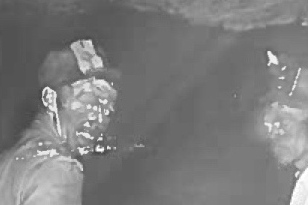Feb 27, 2017 Kristin Catherwood, Intangible Cultural Heritage Development Officer This article originally appeared in the Regina Leader-Post and Saskatoon Star-Phoenix on Saturday, February 18th Heritage Saskatchewan seeks to raise awareness about living heritage, and one way to do that is to show living heritage in action. One of our current undertakings is the Coal in Coronach project. Coal has been historically important in the Coronach and surrounding Big Muddy region, and has been the economic mainstay of the community since the development of the Poplar River Mine and the Poplar River Power Station in the 1970s. In the early days of Coronach’s settlement, underground room and pillar as well as strip coal mining provided local residents with affordable, accessible fuel to heat their homes and businesses. Since the development of the power station, the Coronach region’s coal provides electricity to thousands of Saskatchewan homes and businesses. The coal industry provides hundreds of permanent jobs in the area. Coal has a very tangible effect on life in Coronach, and yet much of its significance lies in intangible cultural heritage. Coronach is currently home to about 700 people. It’s a place that makes most of its living from coal. Parts of the town site itself sit on top of an abandoned mine from the early decades of agricultural settlement in the region. Though originally an agricultural hub, which it continues to be for local farmers and ranchers, no one would dispute that Coronach owes its current prosperity to the lignite coal found in vast quantities not far below the surface of the surrounding landscape. Coal is increasingly controversial, and the future of the coal industry in Canada is uncertain. Whatever the fate of coal and the industries it has spawned, it has had a very human impact. And whatever one’s personal opinions on coal, its significance to our current society cannot be understated. The well-used epithet “King Coal” has been used so often, and in so many places, for good reason. This living heritage project’s purpose is multi-faceted – to document a historical reality quickly fading from memory, to recognize how decisions made in the recent past shape the present reality, and to highlight what is happening today with coal in Coronach. The concept of living heritage encapsulates the reality that our lives and our communities are inextricably entwined with what has come before, much of which is not contained within buildings or objects, but rather is intangible. This heritage we carry with us informs the decisions we make, and thus the consequences, both intended and unforeseen, that result. In becoming aware of living heritage, individuals and communities are empowered to examine what has come before, interpret how it affects our present, and consider how it can be used to plan the future. The results of this project will be a short documentary and booklet produced by Heritage Saskatchewan, but the heritage itself belongs to the community. Several community members will be interviewed for the documentary, and the booklet itself will be written in part by local people. Public engagements are being held throughout the duration of the project to further involve the community in the research process and provide ideas for how they can continue to use living heritage in existing and future museum, tourism, and recreational activities. The project findings will be presented back to the community at a public event on April 12, 2017 in Coronach. As the future of coal becomes uncertain, people in the region are understandably concerned about what will happen to their community if 300 coal industry jobs disappear. But as the Coal in Coronach living heritage project will show, the coal industry is not just a way to make a living, it’s a way of life. Coronach is a community on the cusp of change. How that change will come is unknown, but one could argue: as coal goes, so does Coronach. Coal in Coronach Living Heritage Project


